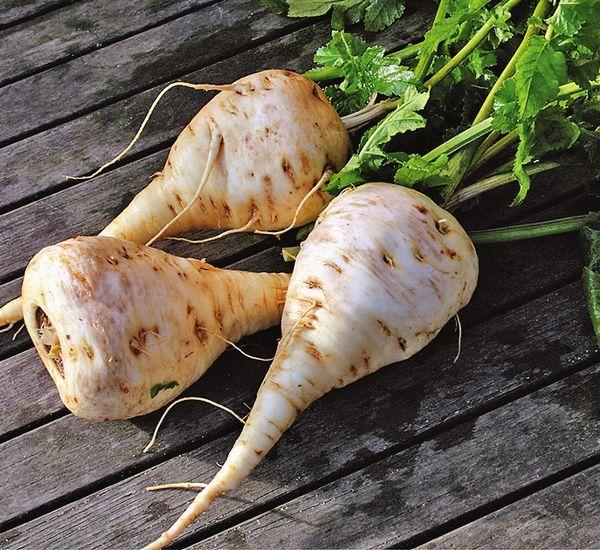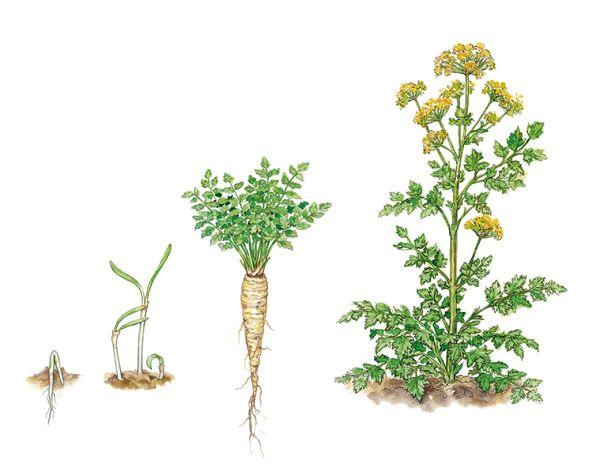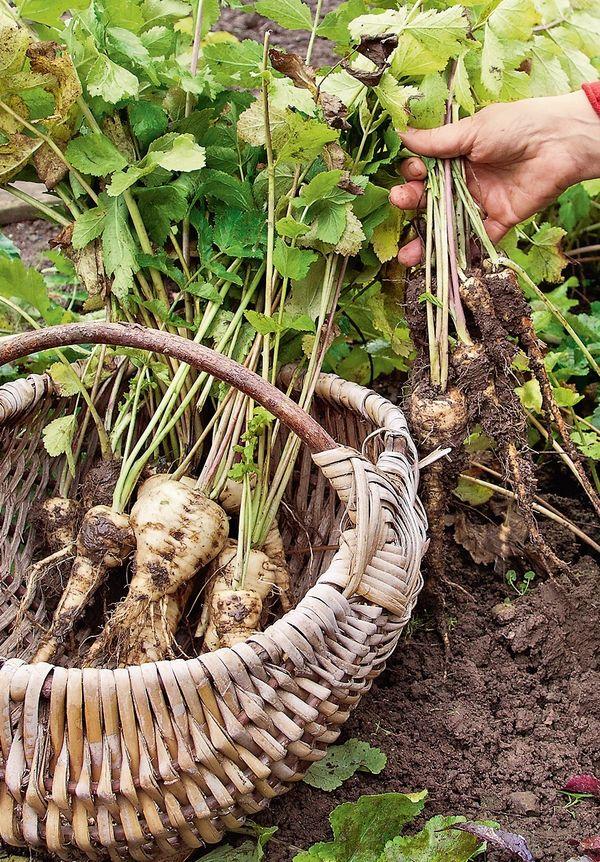How to grow parsnips
 Bashny.Net
Bashny.Net

One of the main food — so until the XVIII century was called in Russia, Pasternak, or as it was also called "white root."
But it was enough to appear on local markets imported from overseas carrots and potatoes, a former favorite turned out to be irrelevant. Meanwhile, parsnips are lower in calories than potatoes, and more useful than carrots (especially rich in "white root" potassium, silicon and phosphorus).
But now remembered not so much for reasons of utility, but because of the growing popularity of echogenicity, in which the emphasis is on natural balance and the failure of the chemicals. Parsnips just don't require such processing, since the little pest will covet. And that's on the shelves again flaunt these fragrant root vegetables. Moreover, dishes of Pasternak's already offered in the menu of gourmet restaurants.
There was an interest — there offer the breeders have selected new varieties. One of them is ‘Aromata’. As, indeed, it is clear by its name, is a particularly aromatic varietal novelty. Its creamy-yellow root vegetables tender, sweet and fragrant, they are good to eat raw, rubbed on a grater and making the basis for the salad. While parsnips this variety is equally hardy and hardy as its progenitors.
You already want to see "white roots" on the site? No problem! In regions with warm climates, planting can begin in March, though, if you wait until mid or end of April, the seeds germinate faster and more friendly (for best results soak them for 2-3 days in water). Important: check the expiration date on the bag with seeds and always buy as many as you plan to sow this year, because the seeds of this plant remain viable for a maximum of two years. To soil undemanding parsnips, but the most beautiful root vegetables grow in loamy soil with a deep fertile layer. If during the preparation of the beds you've made a lot of compost to feed the plants no longer need, on the contrary, when excess nutrients in the growth of more tops, and root remains small. Everything you need to Pasternak, is a rare cultivation and irrigation in a drought.
Regularly loosen the soil around the parsnip — it stimulates the growth of roots. Pinnate leaves of a plant similar to celery greens, young you can use them as a seasoning for salads and soups along with the parsley and dill.
Parsnip — a biennial. Like carrots, this vegetable plant belongs to the Celery family. Since the germination of its flat rounded seed to flowering, if not dig up the roots, it takes around 16 months.

Young sprouts appear rather late — after 2-3 weeks after sowing. In cold spring weather, the garden parsnip is desirable to hide the non-woven material. However, with the emergence of the first leaves that the plant no longer afraid of the frost. When will see the first true leaves, the crops need to thin out, leaving between the seedlings at a distance of 10 cm If sown too thickly, the roots being thin and woody.
The roots are starting to gain weight just since July. In the first months after planting, the taproot is barely thicker than a pencil, with the beginning of its growth in breadth leaf petioles are colored in dark green color and become fleshy. By the end of autumn, when it comes time to harvest, the roots can reach up to 40 cm long and weight several kilograms.
Yellow inflorescences-umbrellas will only appear for the second year in the height of summer, and the seeds ripen in autumn. The harvest is not until October and store in moist sand in a cool place. That autumn, until the first frost, the roots are gaining weight and a distinctive aroma.
Small roots are easily pulled out manually and thicker can break in two. To avoid this, by digging podavaite roots with a garden fork.

You can leave the roots to spend the winter in the garden (then they will be more flavorful), but be sure to cut the tops and okucia plant. And don't forget to dig up parsnips in early spring, before the appearance of young leaves, or the roots will become woody and tasteless.
Roots of the variety ‘Turga’ can stay in the garden until the spring. Their long yellowish "roots" is absolutely terrible frosts.

‘White Gem’ forms a short and wide at the top of white roots with sweet pulp. This is one of those few varieties that are perfect for growing on heavy soils.
For this purpose, select a few plants powerful. Pasternak, blooming in the first year of cultivation, it is unsuitable for collection of seed. Appearing in the second year after planting, the inflorescence give the biggest and best on the germination of seeds. Do not tighten with the collection of seeds, otherwise they will crumble. The best time to collect seed — as soon as the umbrellas will be yellow-brown or light brown. Then gently sift the seeds through a sieve, and Pat dry (it will take a few days) and store until spring in a dark, cool and dry place.
Tip: the leaves and stems of parsnip contain a toxic substance furocoumarins, which in the sun in contact with the skin causes an inflammatory reaction — redness and itchy, sometimes blisters. So, before you go to bed Pasternak, take care of clothing that protects exposed areas of the body, and gloves (or after collecting, immediately wash your hands).published
Source: www.7dach.ru
Tags
See also
Forgotten vegetables — spinach and parsnips: the amazing benefits + recipes
How to grow spinach on the windowsill
How to grow fennel Bush, and as the umbrella
How to grow blackberries
How to grow an oak from an acorn
Pineapple: what are and how to grow a house from a tuft
How to grow ginseng at home
Decorative how to grow tomatoes at home?
How to grow green beans
The radish on the windowsill: growing in summer and winter at home.

















